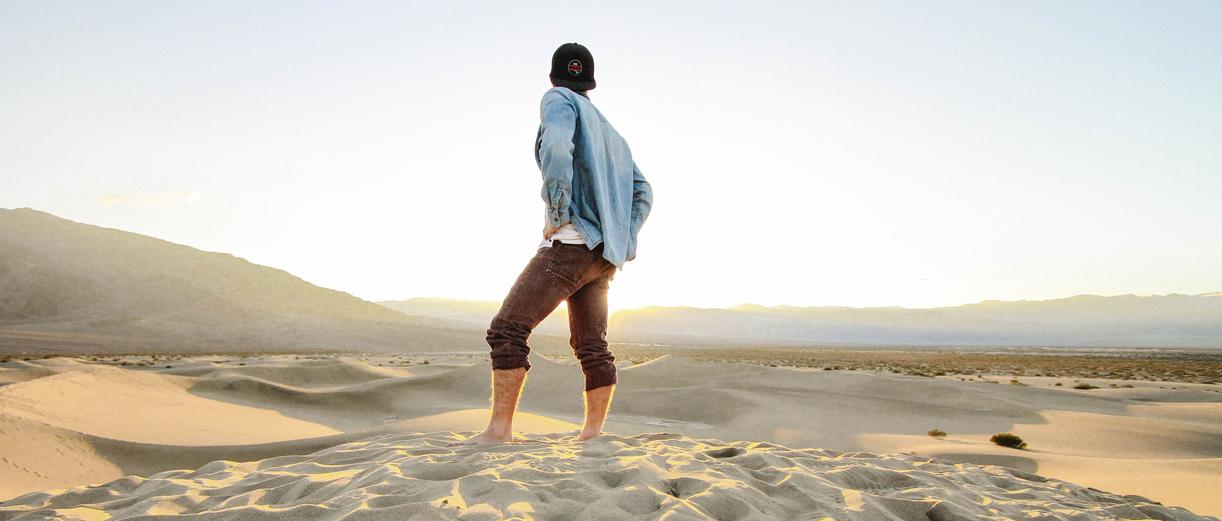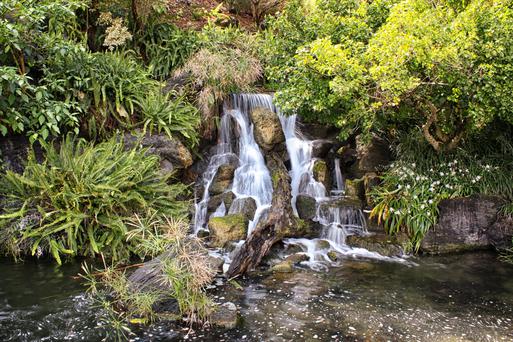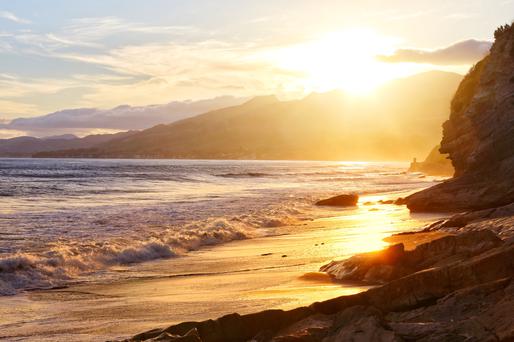What to Bring to Death Valley National Park
- Hiking boots
- Light layers of long-sleeved clothing
- Fleece sweatshirt or other warm layers
- Whistle
- LED headlamp (and extra batteries)
- Bear canisters (for the burros, not bears)
- A California-made backpack
- Three-season tent
- Light sleeping bag
- Mineral sunscreen
- At least 1 gallon of water per person per day
- Freeze-dried and dehydrated foods
- California-made snacks and energy bars
- Detailed map of Death Valley and the surrounding areas
- Compass
- Annual pass or cash to pay for a seven-day pass
- Firewood or camp stove*
*Note: Fires are not allowed during the summer months or during high fire danger at Mahogany Flat, Thorndike, and Wildrose Campgrounds. Additionally, all of the vegetation in the park is protected, so bring or buy firewood (available at the Furnace Creek and Stovepipe Wells General Stores); make a charcoal fire in the National Park Service firepits; or use a gas-burning stove or grill while in Death Valley National Park.
Safety and must-haves for Death Valley
- Drink at least one gallon of water per day
- Stay on designated trails and roads
- Tell someone where you are going
- Start your hikes before 10 a.m. (the hottest part of the day is between 2 p.m. and 7 p.m.)
- Wear light, long-sleeved clothing
- Bring extra layers of clothing to shield yourself from the sun and accommodate cooler mountain temperatures
- Wear hiking boots
- Bring sunscreen, a hat, and sunglasses
- Always take a first-aid kit with you
- Carry a detailed map, trail description (available at the Death Valley Visitor Center), and a compass
- Never rely solely on GPS or cell service (both are spotty and may lead you off paved roads)
- Avoid canyons during rain storms, and be prepared to move to higher ground during storms and floods
- Never place your hands or feet where you can’t see; rattlesnakes, scorpios, and black widow spiders are common and hide in these cracks
- Do not enter mine tunnels or shafts
- Do not take anything from the park that you did not bring in
- Do not feed the wildlife
Preparing to Hike in Death Valley National Park
While the drive from Mount Whitney to the park only takes about an hour and a half, when it comes to hiking, the extreme temperatures require an early start. Even with the cooler temperatures in the fall and winter months, it is safer to head out before 10 a.m. If time permits, make the drive over the day before your adventures are set to begin, and stay at the Wildrose Campground or Emigrant Campground.
Whichever campground you choose, try to arrive early in the day; Emigrant Campground has only 10 camping spots while Wildrose Campground has 23—all of which are free but are only available on a first-come, first-served basis. Should these two options fail, there are hundreds of other campsites located within the park, at Stovepipe Wells Campground and Furnace Creek Campground.
In addition to camping, Death Valley lodging includes a few hotels and resorts—such as The Ranch at Death Valley and The Oasis at Death Valley—if roughing it isn’t your thing. While they offer more luxurious experiences, these getaways also require about an hour-and-a-half drive through the national park to reach the Wildrose Charcoal Kilns, where our hike begins..
When you’re ready to hit the trail, make your way down Emigrant Canyon Road, past the 100-foot Mesquite Flat Sand Dunes, and follow the curve in the road as it turns into Wood Canyon Road (unless you stay at Wildrose Campground, in which case you will already be on Wood Canyon Road). From here, follow the road as it travels southeast. When you come across the graveled Charcoal Kiln Road, turn onto it, and drive just over two miles until you arrive at the parking lot to the Wildrose Charcoal Kilns.
These kilns were once used to produce charcoal (by charring wood and other organic materials) for use in two smelters near the lead-silver mines of the Modock Consolidated Mining Company. This company was based in San Francisco and was incorporated by a few men, including William Randolph Hearst’s father, George Hearst. Because the kilns are thought to have only been used for two years between 1877 and 1879, the structures appear in incredible condition to this day.
After taking a look around, continue on to the 8.4-mile out-and-back Wildrose Peak trail tucked just to the left of the kilns. Shaded with pinyon pines and juniper trees, this well-defined trail might make you forget you’re in Death Valley. Less than two miles in, your efforts reward you with vistas of the valley floor before the switchbacks greet you for the next few miles. Arriving above the treeline is your indicator that you’ve nearly made it and only a quarter mile remains before the return trip. From here, the views are unobstructed. Take in the panoramic scenes of the Mojave Desert as the mountain ranges undulate along the horizon. When the sky is clear, it’s possible to see both the highest and lowest points on the continent; look west toward the 14,505-foot Mount Whitney and east toward the Badwater Basin, nestled 282 feet below sea level. These breathtaking views are more than enough to occupy your mind on the 4.2-mile hike back down the mountain.
Though the day could easily end here, make time for stargazing like no other. Because of its Dark Sky National Park distinction, Death Valley is one of the best places to take in the night sky without fear of light pollution. Drive out to Harmony Borax Works or Badwater Basin for good vistas, or head to Mesquite Flat Sand Dunes for unbelievable, unobstructed views as the stars melt into the horizon.






